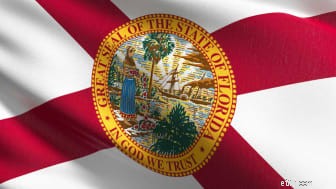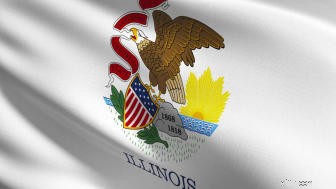
Dankzij de COVID-19-pandemie hebben miljoenen Amerikanen een ongewenste spoedcursus gekregen over het Amerikaanse werkloosheidsuitkeringssysteem. Er zijn veel veelgestelde vragen van mensen die voor het eerst een WW-uitkering aanvragen. Hoe vraag ik een uitkering aan? Hoeveel krijg ik? Hoe lang zullen de voordelen duren? Op deze vragen hebben mensen meteen een antwoord nodig. Maar zodra u betalingen begint te ontvangen, zal er waarschijnlijk een andere vraag in u opkomen:Moet ik belasting betalen over mijn werkloosheidsuitkeringen?
Als het gaat om federale inkomstenbelastingen, is het algemene antwoord ja. Uncle Sam belast werkloosheidsuitkeringen alsof het loon is (hoewel tot $ 10.200 aan werkloosheidsuitkering ontvangen in 2020 is vrijgesteld van federale belasting voor mensen met een aangepast bruto-inkomen van minder dan $ 150.000 ). Als het echter om inkomstenbelastingen gaat, hangt het af van waar u woont. De meeste staten belasten werkloosheidsuitkeringen volledig. Sommige staten belasten ze echter helemaal niet (soms omdat de staat geen inkomstenbelasting heft), en een handvol staten zal slechts een deel van uw voordelen belasten. Bovendien maken sommige staten, net als de federale overheid, speciale uitzonderingen op hun algemene regel voor 2020 en/of 2021 om mensen te helpen die hun baan zijn kwijtgeraakt door de pandemie.
Waar staat uw staat als het gaat om het belasten van werkloosheidsuitkeringen? Lees verder om erachter te komen. We laten u ook weten welke staten richtlijnen hebben gegeven over hoe ze de federale vrijstelling van $ 10.200 voor werkloosheidsuitkeringen die in 2020 zijn ontvangen, gaan behandelen. Vervolgens schetsen we als bonus de inkomsten-, verkoop- en onroerendgoedbelastingniveaus van elke staat - en geef een link naar de pagina van de staat in onze gids per staat over belastingen op gezinnen uit de middenklasse — zodat u een idee krijgt van de algemene belastingdruk waar u woont.

Overheidsbelastingen op werkloosheidsuitkeringen: Alabama belast geen werkloosheidsuitkeringen. Bovendien is de werkloosheidsuitkering die wordt verstrekt via de federale CARES-wet en daaropvolgende verlengingen vrijgesteld van staats-, provincie- of gemeentelijke inkomstenbelasting voor de belastingjaren 2020 en 2021.
De eerste $ 50.000 die van een werkgever wordt ontvangen als ontslagvergoeding, werkloosheidsuitkering en dergelijke als gevolg van "administratieve inkrimping" wordt ook niet belast.
Inkomstenbelastingbereik staat: Laag:2% (op maximaal $ 1.000 aan belastbaar inkomen voor gehuwde gezamenlijke indieners en tot $ 500 voor alle anderen). Hoog:5% (op meer dan $ 6.000 aan belastbaar inkomen voor gehuwde gezamenlijke indieners en meer dan $ 3.000 voor alle anderen). Sommige gemeenten in Alabama heffen ook bedrijfsbelastingen op salarissen en lonen.
Omzetbelasting: 4% staatsheffing. Plaatsen kunnen daar tot 7,5% aan toevoegen en het gemiddelde gecombineerde tarief is 9,22%, volgens de Belastingdienst.
Onroerendgoedbelastingen: In Alabama is het mediane tarief van de onroerendgoedbelasting $ 395 per $ 100.000 aan getaxeerde woningwaarde.
Ga voor meer informatie naar de Alabama State Tax Guide for middle-class families .

Overheidsbelastingen op werkloosheidsuitkeringen: Alaska heft geen belasting op werkloosheidsuitkeringen.
Inkomstenbelastingbereik staat: Er is geen staatsinkomstenbelasting.
Omzetbelasting: Alaska is een van de vijf staten zonder staat btw. Plaatsen kunnen echter verkoopbelasting heffen, die kan oplopen tot 7,5%. Maar volgens de Tax Foundation is het gemiddelde over de gehele staat slechts 1,76%.
Onroerendgoedbelastingen: In Alaska is het mediane tarief van de onroerendgoedbelasting $ 1.182 per $ 100.000 aan geschatte woningwaarde.
Ga voor meer informatie naar de Alaska State Tax Guide for middle-class families.

Overheidsbelastingen op werkloosheidsuitkeringen: Arizona belast over het algemeen werkloosheidsuitkeringen in dezelfde mate als volgens de federale wetgeving. De staat heeft ook de federale vrijstelling goedgekeurd voor maximaal $ 10.200 aan werkloosheidsuitkeringen ontvangen in 2020. Belastingbetalers die in 2020 een werkloosheidsuitkering hebben ontvangen en vóór 11 maart 2021 een Arizona-belastingaangifte voor 2020 hebben ingediend, moeten hun Arizona-aangifte wijzigen om een terugbetaling van de Arizona te ontvangen. inkomstenbelasting die ze te veel hebben betaald. Belastingbetalers die na 11 maart 2021 een Arizona-aangifte hebben ingediend, hebben hoogstwaarschijnlijk al het voordeel van de vrijstelling ontvangen en mogen geen gewijzigde Arizona-aangifte indienen. Ongeacht wanneer ze een Arizona-aangifte hebben ingediend, moeten belastingbetalers die een federale inkomstenbelastingteruggave van werkloosheidsuitkeringen van de IRS hebben ontvangen, hun 2020 Arizona-aangifte wijzigen.
Inkomstenbelastingbereik staat: Laag:2,59% (op maximaal $ 54.615 aan belastbaar inkomen voor gezamenlijke filers en tot $ 27.808 voor single filers). Hoog:4,5% (op belastbaar inkomen van meer dan $ 500.000 voor gezamenlijke indieners en meer dan $ 250.000 voor alleenstaande belastingbetalers).
Vanaf 2021 zal Arizona een toeslag van 3,5% opleggen op het belastbaar inkomen van meer dan $ 500.000 voor gezamenlijke indieners en meer dan $ 250.000 voor individuele belastingbetalers. De toeslag kan het totale toptarief echter niet verhogen tot boven 4,5% (het hierboven genoemde tarief van 4,5% is inclusief de toeslag). Bovendien wordt de toeslag voor de rechtbanken aangevochten, dus de kans bestaat dat deze uiteindelijk helemaal niet wordt toegepast als de rechtbanken deze afkeuren.
Vanaf 2022 wordt een tariefstructuur met twee schijven ingevoerd. De tarieven zijn 2,55% (op maximaal $ 54.544 van het belastbaar inkomen voor gezamenlijke filers en tot $ 27.272 voor enkele filers) en 2,98% (op meer dan $ 54,54 van het belastbaar inkomen voor gezamenlijke filers en op meer dan $ 27.272 van het belastbaar inkomen voor single filers ). De tarieven zullen dalen tot respectievelijk 2,53% en 2,75% als bepaalde bedragen aan staatsinkomsten worden bereikt. De staat zal dan een enkel vast tarief van 2,5% aannemen als een ander staatsinkomstenbedrag wordt bereikt.
Omzetbelasting: 5,6% staatsheffing. Gemeenten kunnen daar tot 5,6% aan toevoegen, maar de gemiddelde gecombineerde heffing is 8,4%, aldus de Belastingdienst.
Onroerendgoedbelastingen: Het mediane tarief van de onroerendgoedbelasting in Arizona is $ 617 per $ 100.000 aan geschatte woningwaarde.
Ga voor meer informatie naar de Arizona State Tax Guide for middle-class families.

Overheidsbelastingen op werkloosheidsuitkeringen: Arkansas belast normaal gesproken werkloosheidsuitkeringen. Werkloosheidsuitkeringen betaald in 2020 en 2021 zijn echter vrijgesteld van belasting.
Inkomstenbelastingbereik staat: Laag:2% (op belastbaar inkomen van $ 4.800 tot $ 9.499 voor belastingbetalers met een netto-inkomen van minder dan $ 23.600), 0,75% (op eerste $ 4.799 van belastbaar inkomen voor belastingbetalers met een netto-inkomen van $ 23.600 tot $ 84.500), of 2% (op eerste $ 4.300 van belastbaar inkomen voor belastingbetalers met een netto-inkomen van meer dan $ 84.500). Hoog:3,4% (op belastbaar inkomen van $ 14.300 tot $ 23.599 voor belastingbetalers met een netto-inkomen van minder dan $ 23.600), 5,9% (op belastbaar inkomen van $ 39.700 tot $ 84.500 voor belastingbetalers met een netto-inkomen van $ 23.600 tot $ 84.500), of 5,9% (op belastbaar inkomen meer dan $ 8.500 voor belastingbetalers met een netto-inkomen van meer dan $ 84.500).
Vanaf 2022 is het tarief van 2% van toepassing op een netto-inkomen van $ 5.000 tot $ 9.999 voor mensen met een netto-inkomen van $ 84.500 of minder en op de eerste $ 4.300 van het netto-inkomen voor mensen met een netto-inkomen van meer dan $ 84.500. Het toptarief daalt naar 5,5% en is van toepassing op een netto-inkomen van $39.700 tot $84.500 voor mensen met een netto-inkomen van $84.500 of minder en op het netto-inkomen van meer dan $8.500 voor mensen met een netto-inkomen van meer dan $84.500.
Vanaf 2023 wordt het toptarief weer verlaagd naar 5,3%. Als er op bepaalde data geen geld is overgemaakt van het Catastrophic Reserve Fund van de staat, zal het toptarief opnieuw dalen tot 5,1% voor 2024 en tot 4,9% voor 2025 en daarna.
Omzetbelasting: 6,5% staatsheffing. Plaatsen kunnen maar liefst 6,125% toevoegen, en het gemiddelde gecombineerde tarief is 9,48%, volgens de Tax Foundation.
Onroerendgoedbelastingen: Het mediane tarief van de onroerendgoedbelasting voor huiseigenaren in Arkansas is $ 612 per $ 100.000 aan getaxeerde woningwaarde.
Ga voor meer informatie naar de Arkansas State Tax Guide for middle-class families.

Overheidsbelastingen op werkloosheidsuitkeringen: Californiërs hoeven geen inkomstenbelasting te betalen over werkloosheidsuitkeringen.
Als gevolg van de federale vrijstelling van $ 10.200 voor werkloosheidsuitkeringen die in 2020 is ontvangen, hoeven mensen die vóór 11 maart een belastingaangifte in Californië voor 2020 hebben ingediend, de California Earned Income Tax Credit (CalEITC) aan te vragen en een werkloosheidsinkomen aan te geven, niets te doen om hun Californische terugkeer corrigeren. De staat zal de nodige wijzigingen aanbrengen en de resulterende belastingteruggave van de staat verzenden vanaf augustus 2021. Bovendien is er geen actie vereist als u uw belastingaangifte voor Californië voor 2020 na 11 maart indient, de CalEITC claimt en werkloosheidsinkomsten meldt.
Als u een Californische belastingaangifte voor 2020 hebt ingediend, de CalEITC niet hebt geclaimd, een werkloosheidsinkomen hebt opgegeven en een federale AGI van minder dan $ 40.201 (alleenstaand) of $ 50.401 (gehuwd indienen gezamenlijk) hebt opgegeven, kijk dan of u in aanmerking komt voor CalEITC. Als u dat doet, stuur dan formulier FTB 3514 op. U hoeft uw belastingaangifte voor Californië niet te wijzigen.
Inkomstenbelastingbereik staat: Laag:1% (op maximaal $ 17.864 aan belastbaar inkomen voor gehuwde gezamenlijke indieners en tot $ 8.932 voor degenen die individueel indienen). Hoog:13,3% (op meer dan $ 1.198.024 voor gehuwde gezamenlijke indieners en $ 1 miljoen voor degenen die individueel indienen).
Voor 2021 is het tarief van 1% van toepassing op de eerste $ 18.650 aan belastbaar inkomen voor gezamenlijke indieners en de eerste $ 9.325 aan belastbaar inkomen voor enkele indieners. Het tarief van 13,3% is van toepassing op een belastbaar inkomen van $ 1.250.738 of meer voor gezamenlijke filers en $ 1 miljoen of meer voor single filers.
Omzetbelasting: 7,25% staatsheffing. Plaatsen kunnen maar liefst 2,5% toevoegen, en het gemiddelde gecombineerde tarief is 8,82%, volgens de Tax Foundation.
Onroerendgoedbelastingen: In Californië is het mediane tarief van de onroerendgoedbelasting $ 729 per $ 100.000 aan geschatte woningwaarde.
Ga voor meer informatie naar de belastinggids voor gezinnen uit de middenklasse in Californië.

Overheidsbelastingen op werkloosheidsuitkeringen: Colorado belast alle werkloosheidsuitkeringen.
Bij het invullen van uw Colorado-aangifte voor inkomstenbelasting 2020, moet u het bedrag van eventuele werkloosheidsuitkeringen die zijn uitgesloten van uw federaal belastbaar inkomen op grond van de American Rescue Plan Act, optellen. Dit bedrag moet worden toegevoegd aan regel 6 (andere toevoegingen) van uw Colorado-aangifte, samen met alle andere wettelijk verplichte toeslagen. Voer in het uitlegveld "Werkloosheidsuitkering" in.
Inkomstenbelastingbereik: Colorado heeft een vlak inkomstenbelastingtarief van 4,55% (de goedkeuring van Proposition 116, die verscheen op de stemming van november 2020, verlaagde het tarief van 4,63% naar 4,55%). De staat beperkt ook hoeveel zijn inkomsten van jaar tot jaar kunnen groeien door het belastingtarief te verlagen als de inkomstengroei te hoog is. In 2019 resulteerde dit bijvoorbeeld in een tariefverlaging naar 4,5%. Denver en een paar andere steden in Colorado heffen ook een maandelijkse loonbelasting.
Omzetbelasting: 2,9% staatsheffing. Plaatsen kunnen maar liefst 8,3% toevoegen, en het gemiddelde gecombineerde tarief is 7,72%, volgens de Tax Foundation.
Onroerendgoedbelastingen: In Colorado is het mediane tarief van de onroerendgoedbelasting $ 494 per $ 100.000 aan geschatte woningwaarde.
Ga voor meer informatie naar de Colorado State Tax Guide for middle-class families.

Overheidsbelastingen op werkloosheidsuitkeringen: Connecticut belast werkloosheidsuitkeringen in dezelfde mate als volgens de federale wetgeving. Als gevolg hiervan is elke werkloosheidsuitkering die in 2020 is ontvangen (tot $ 10.200), vrijgesteld van federale inkomstenbelasting, niet onderworpen aan inkomstenbelasting in Connecticut. Als u uw federale en Connecticut-aangifte al hebt ingediend en u moet uw federale aangifte wijzigen, wijzig dan uw Connecticut-aangifte door formulier CT-1040X in te dienen met behulp van de federale AGI die u op uw gewijzigde federale aangifte hebt gerapporteerd. Als u uw federale aangifte niet hoeft te wijzigen (d.w.z. u verwacht dat de IRS uw aangifte automatisch opnieuw zal berekenen), moet u uw Connecticut-aangifte op dit moment niet wijzigen. De staat wacht op meer advies van de IRS over hoe herberekeningen worden gerapporteerd aan belastingbetalers en belastinginstanties.
Inkomstenbelastingbereik staat: Laag:3% (op maximaal $ 20.000 aan belastbaar inkomen voor gehuwde gezamenlijke indieners en tot $ 10.000 voor degenen die individueel indienen). Hoog:6,99% (op het bedrag van meer dan $ 1 miljoen voor gehuwde gezamenlijke indieners en meer dan $ 500.000 voor degenen die individueel indienen).
Omzetbelasting: De staat belast de meeste artikelen met 6,35%, en plaatsen mogen daar niets aan toevoegen.
Onroerendgoedbelastingen: Het mediane tarief van de onroerendgoedbelasting voor inwoners van Connecticut is $ 2.139 per $ 100.000 aan getaxeerde woningwaarde.
Ga voor meer informatie naar de Connecticut State Tax Guide for Middle-Class Families.

Overheidsbelastingen op werkloosheidsuitkeringen: Werkloosheidsuitkeringen worden meestal belast in Delaware. De in 2020 ontvangen werkloosheidsuitkeringen zijn echter vrijgesteld van belasting.
Inkomstenbelastingbereik staat: Laag:2,2% (op belastbaar inkomen van $ 2.001 tot $ 5.000). Hoog:Hoog:6,6% (op belastbaar inkomen boven $ 60.000). Wilmington heft ook een stadsbelasting op lonen.
Omzetbelasting: Noch de staat, noch de gemeenten heffen een omzetbelasting.
Onroerendgoedbelastingen: Voor huiseigenaren in Delaware is het mediane tarief van de onroerendgoedbelasting $ 562 per $ 100.000 getaxeerde woningwaarde.
Ga voor meer informatie naar de Delaware State Tax Guide for middle-class families.

Overheidsbelastingen op werkloosheidsuitkeringen: Vanaf 2021 belast het District of Columbia (Washington, D.C.) geen werkloosheidsuitkeringen.
De stad heeft de federale vrijstelling van maximaal $ 10.200 goedgekeurd voor werkloosheidsuitkeringen ontvangen in 2020. Belastingbetalers die een originele belastingaangifte voor 2020 DC hebben ingediend zonder de werkloosheidsuitsluiting te melden, moeten een gewijzigde aangifte indienen op basis van hun gewijzigde federale aangepaste bruto-inkomen.
Inkomstenbelastingbereik staat: Laag:4% (op belastbaar inkomen tot $ 10.000). Hoog:8,95% (op belastbaar inkomen van meer dan $ 1 miljoen). Vanaf 2022 zal het hoogste tarief 10,75% zijn op een belastbaar inkomen van meer dan $ 1 miljoen.
Omzetbelasting: 6% toeristenbelasting.
Onroerendgoedbelastingen: In het District of Columbia is het mediane tarief van de onroerendgoedbelasting $ 564 per $ 100.000 aan getaxeerde woningwaarde.
Ga voor meer informatie naar de District of Columbia Tax Guide for Middle-Class Families.

Overheidsbelastingen op werkloosheidsuitkeringen: Er zijn geen belastingen op werkloosheidsuitkeringen in Florida.
Inkomstenbelastingbereik staat: Er is geen staatsinkomstenbelasting.
Omzetbelasting: 6% staatsheffing. Plaatsen kunnen maar liefst 2% toevoegen, en het gemiddelde gecombineerde tarief is 7,01%, volgens de Tax Foundation.
Onroerendgoedbelastingen: In Florida is het mediane tarief van de onroerendgoedbelasting $ 830 voor elke $ 100.000 aan geschatte woningwaarde.
Ga voor meer informatie naar de Florida State Tax Guide for middle-class families.

Overheidsbelastingen op werkloosheidsuitkeringen: Georgië belast werkloosheidsuitkeringen.
De staat heeft de federale vrijstelling voor maximaal $ 10.200 aan werkloosheidsuitkeringen ontvangen in 2020 niet goedgekeurd. Alle werkloosheidsinkomsten die waren uitgesloten op de federale aangifte van een belastingbetaler, moeten weer worden toegevoegd aan Georgia Form 500, Schedule 1, Line 5.
Inkomstenbelastingbereik staat: Laag:1% (op de eerste $ 1.000 aan belastbaar netto-inkomen voor gehuwde paren die gezamenlijk indienen; op de eerste $ 750 voor individuele indieners; en op de eerste $ 500 voor gehuwde paren die afzonderlijk indienen). Hoog:5,75% (op de eerste $ 1.000 aan belastbaar netto-inkomen voor gehuwde paren die gezamenlijk een aanvraag indienen; op de eerste $ 750 voor individuele indieners; en op de eerste $ 500 voor gehuwde paren die afzonderlijk indienen).
Omzetbelasting: 4% staatsheffing. Plaatsen kunnen maar liefst 4,9% toevoegen, en het gemiddelde gecombineerde tarief is 7,33%, volgens de Tax Foundation.
Onroerendgoedbelastingen: Het mediane tarief van de onroerendgoedbelasting in Georgië is $ 875 per $ 100.000 aan geschatte woningwaarde.
Ga voor meer informatie naar de staatsbelastinggids van Georgië voor gezinnen uit de middenklasse.

Overheidsbelastingen op werkloosheidsuitkeringen: Werkloosheidsuitkeringen worden volledig belast in Hawaï.
Het Hawaii Department of Taxation kan geen definitieve richtlijnen geven voor de goedkeuring van de federale vrijstelling van de eerste $ 10.200 aan werkloosheidsuitkeringen die in 2020 zijn ontvangen totdat de staatswetgever alle gerelateerde wetgeving goedkeurt.
Inkomstenbelastingbereik staat: Laag:1,4% (op belastbaar inkomen tot $ 4.800 voor gehuwde paren die gezamenlijk indienen; tot $ 2.400 voor gehuwde paren die afzonderlijk indienen en individuele indieners). Hoog:11% (op belastbaar inkomen van meer dan $ 400.000 voor gehuwde paren die gezamenlijk een aanvraag indienen en overlevende echtgenoten; op meer dan $ 200.000 voor gehuwde paren die afzonderlijk indienen en individuele indieners).
Omzetbelasting: 4% staatsheffing. Plaatsen kunnen maar liefst 0,5% toevoegen, maar het gemiddelde gecombineerde tarief is volgens de Belastingdienst slechts 4,44%.
Onroerendgoedbelastingen: Het mediane tarief van de onroerendgoedbelasting in Hawaï is $ 280 per $ 100.000 aan geschatte woningwaarde.
Ga voor meer informatie naar de Hawaïaanse belastinggids voor gezinnen uit de middenklasse.

Overheidsbelastingen op werkloosheidsuitkeringen: Idaho belast werkloosheidsuitkeringen doorgaans in dezelfde mate als op federaal niveau. Alle werkloosheidsuitkeringen voor 2020 die zijn uitgesloten voor federale belastingdoeleinden op formulier 1040, schema 1, regel 8, moeten echter worden toegevoegd aan uw Idaho-aangifte voor inkomstenbelasting. Als u Idaho-formulier 40 indient, rapporteer dan het uitgesloten inkomen op formulier 39R, deel A, regel 6, 'Overige toevoegingen'. Als u Idaho-formulier 43 indient, moet u de federale uitsluiting van werkloosheidsuitkeringen niet opnemen op regel 19, 'Overige inkomsten'. Meld het in plaats daarvan op formulier 39NR, deel A, regel 4, kolom A, 'Overige toevoegingen'.
Inkomstenbelastingbereik staat: Laag:1% (op belastbaar inkomen tot $ 3.176 voor gehuwde gezamenlijke indieners en tot $ 1.588 voor individuele indieners). Hoog:6,5% (op een belastbaar inkomen van $ 15.878 of meer voor gehuwde gezamenlijke filers en $ 7.939 of meer voor individuele filers).
Omzetbelasting: 6% staatsheffing. Plaatsen (meestal resortgemeenschappen) kunnen maar liefst 3% toevoegen, maar het gemiddelde gecombineerde tarief is slechts 6,02%, volgens de Tax Foundation.
Onroerendgoedbelastingen: In Idaho is het mediane tarief van de onroerendgoedbelasting $ 633 per $ 100.000 aan getaxeerde woningwaarde.
Ga voor meer informatie naar de Idaho State Tax Guide for middle-class families.

Overheidsbelastingen op werkloosheidsuitkeringen: Illinois belast werkloosheidsuitkeringen over het algemeen volledig. De staat heeft echter de federale belastingvrijstelling van $ 10.200 voor 2020-werkloosheidsuitkeringen aangenomen. Als u uw belastingaangifte Illinois 2020 vóór 15 maart 2021 elektronisch hebt ingediend, hoeft u niets te doen. Het Illinois Department of Revenue zou uw aangepaste bruto-inkomen (AGI) automatisch moeten hebben bijgewerkt en de nodige terugbetalingen moeten sturen. Als u uw aangifte op papier of elektronisch hebt ingediend na 14 maart 2021 en de uitsluiting van werkloosheid niet op uw federale aangifte hebt gemeld, moet u een gewijzigde aangifte indienen met behulp van formulier IL-1040-X en een pro-forma federaal formulier 1040 en schema 1 met de herberekening van uw AGI. Schrijf "Werkloosheidsuitsluiting" bovenaan formulier IL-1040-X.
Inkomstenbelastingbereik staat: Er is een vast tarief van 4,95% van het federale aangepaste bruto-inkomen na aanpassingen en persoonlijke vrijstellingen.
Omzetbelasting: 6,25% staatsheffing. Plaatsen kunnen maar liefst 4,75% toevoegen en het gemiddelde gecombineerde tarief is 8,83%, volgens de Tax Foundation.
Onroerendgoedbelastingen: In Illinois is het mediane tarief van de onroerendgoedbelasting $ 2.165 per $ 100.000 aan getaxeerde woningwaarde.
Ga voor meer informatie naar de belastinggids van Illinois voor gezinnen uit de middenklasse.

Overheidsbelastingen op werkloosheidsuitkeringen: Hoewel werkloosheidsuitkeringen in Indiana belastbaar zijn, kan een deel van uw uitkeringen aftrekbaar zijn. Het aftrekbare bedrag hangt af van uw federaal aangepast bruto-inkomen, hoeveel werkloosheidsuitkering u ontvangt en uw indieningsstatus. Vul het "Werkblad Werkloosheidsuitkering" in het instructieboekje Form IT-40 in om het exacte bedrag van uw aftrek te berekenen.
De federale vrijstelling voor maximaal $ 10.200 aan werkloosheidsuitkeringen ontvangen in 2020 is niet van toepassing in Indiana. Daarom moet een bedrag dat is uitgesloten voor federale inkomstenbelastingdoeleinden, worden opgeteld bij het indienen van uw Indiana-aangifte voor inkomstenbelasting.
Indiana ziet af van rente en boetes op verschuldigde belasting als gevolg van het niet opnemen van een werkloosheidsuitkering voor 2020 in het gecorrigeerde bruto-inkomen van Indiana als het bedrag was uitgesloten voor federale inkomstenbelastingdoeleinden. Er wordt echter geen kwijtschelding verleend van rente over bedragen die na 30 september 2021 verschuldigd zijn.
Inkomstenbelastingbereik staat: De staat Hoosier heeft een vast tarief van 3,23% van het door de staat gecorrigeerde bruto-inkomen na wijzigingen. Provincies heffen ook inkomstenbelasting.
Omzetbelasting: 7% staatsheffing. Geen lokale belastingen.
Onroerendgoedbelastingen: Het mediane tarief van de onroerendgoedbelasting voor huiseigenaren in Indiana is $ 810 per $ 100.000 aan geschatte woningwaarde.
Ga voor meer informatie naar de Indiana State Tax Guide for middle-class families.

Overheidsbelastingen op werkloosheidsuitkeringen: Werkloosheidsuitkeringen zijn over het algemeen volledig belastbaar in Iowa. De staat keurt echter de federale vrijstelling van $ 10.200 goed voor werkloosheidsuitkeringen die in 2020 zijn ontvangen. Het Iowa Department of Revenue zal automatische aanpassingen maken voor mensen die al een Iowa-aangifte inkomstenbelasting 2020 hebben ingediend. Als gevolg hiervan hoeven belastingbetalers geen gewijzigde Iowa-belastingaangifte in te dienen als hun enige aanpassing betrekking heeft op werkloosheidsuitkeringen. Mensen die een originele belastingaangifte voor 2020 in Iowa indienen, moeten het bedrag van de uitsluiting van werkloosheidsuitkeringen melden op formulier IA 1040, regel 14, met de code M.
Inkomstenbelastingbereik staat: Laag:0,33% (op maximaal $ 1.676 aan belastbaar inkomen). Hoog:8,53% (op belastbaar inkomen van meer dan $ 75.240). Iowa heeft ook lokale inkomenstoeslagen die worden gebruikt voor scholen en hulpdiensten.
Voor 2022 geldt het laagste tarief voor belastbaar inkomen tot $ 1.743, terwijl het hoogste tarief van toepassing is op belastbaar inkomen boven $ 78.435.
Vanaf 2023 zal het laagste tarief van de inkomstenbelasting in Iowa 4,4% bedragen (op maximaal $ 6.000 aan belastbaar inkomen voor single filers en tot $ 12.000 van belastbaar inkomen voor joint filers), terwijl het hoogste tarief 6,5% zal zijn (op meer dan $ 75.000 aan belastbaar inkomen voor single filers en meer dan $ 150.000 aan belastbaar inkomen voor joint filers).
Omzetbelasting: 6% staatsheffing. Plaatsen kunnen maar liefst 1% toevoegen, en het gemiddelde gecombineerde tarief is 6,94%, volgens de Tax Foundation.
Onroerendgoedbelastingen: Het mediane tarief van de onroerendgoedbelasting in Iowa is $ 1.529 per $ 100.000 aan geschatte woningwaarde.
Ga voor meer informatie naar de Iowa State Tax Guide for Middle-Class Families.

Overheidsbelastingen op werkloosheidsuitkeringen: Kansas belast werkloosheidsuitkeringen in dezelfde mate als volgens de federale wetgeving. Als gevolg hiervan is de federale vrijstelling van $ 10.200 voor werkloosheidsuitkeringen die in 2020 is ontvangen, ook van toepassing op de inkomstenbelasting in Kansas. Als u uw belastingaangifte in Kansas voor 2020 al heeft ingediend zonder de vrijstelling te claimen, moet u een gewijzigde belastingaangifte voor de staat indienen met een kopie van de brief die u van de IRS heeft ontvangen over uw federale uitsluiting.
Inkomstenbelastingbereik staat: Laag:3,1% (op belastbaar inkomen van $ 2.501 tot $ 15.000 voor enkele indieners en van $ 5.001 tot $ 30.000 voor gezamenlijke indieners). Hoog:5,7% (op meer dan $ 30.000 aan belastbaar inkomen voor single filers en meer dan $ 60.000 voor joint filers). Kansas heeft ook een "immateriële belasting" die door sommige plaatsen wordt geheven op onverdiende inkomsten.
Omzetbelasting: 6,5% staatsheffing. Plaatsen kunnen maar liefst 4% toevoegen, en het gemiddelde gecombineerde tarief is 8,7%, volgens de Tax Foundation.
Onroerendgoedbelastingen: In Kansas is het mediane tarief van de onroerendgoedbelasting voor huiseigenaren $ 1.369 voor elke $ 100.000 aan geschatte woningwaarde.
Ga voor meer informatie naar de Kansas State Tax Guide for middle-class families.

Overheidsbelastingen op werkloosheidsuitkeringen: Werkloosheidsuitkeringen zijn volledig belastbaar in Kentucky.
De staat heeft de federale vrijstelling voor maximaal $ 10.200 aan werkloosheidsuitkeringen ontvangen in 2020 niet goedgekeurd. Elke werkloosheidsuitkering die is uitgesloten op de federale inkomstenbelastingaangifte van een inwoner van Kentucky moet worden toegevoegd aan zijn of haar individuele inkomstenbelastingaangifte in Kentucky op schema M, regel 5 , als een "andere toevoeging."
Inkomstenbelastingbereik staat: Kentucky heeft een vast inkomstenbelastingtarief van 5%. Bepaalde provincies, steden en andere lokale overheidsinstanties (zoals schoolbesturen) kunnen een aanvullende loonbelasting heffen op het loon dat wordt verdiend door werknemers die binnen hun grenzen werken.
Omzetbelasting: Staatsheffing van 6%. There are no local sales taxes in Kentucky.
Property Taxes: The median property tax rate in Kentucky is $829 per $100,000 of assessed home value.
For more information, go to the Kentucky State Tax Guide for Middle-Class Families.

State Taxes on Unemployment Benefits: Louisiana taxes unemployment benefits to the same extent as they are taxed under federal law. As a result, the federal $10,200 exemption for unemployment compensation received in 2020 also applies for Louisiana income tax purposes. If you already filed your 2020 Louisiana tax return without claiming the exemption, you should file an amended state return and reduce "Line 7, Federal Adjusted Gross Income" (or Schedule E, Line 1, if used) by the exemption amount allowed on your federal return.
State Income Tax Range: Low: 2% (on $12,500 or less of taxable income for individuals, $25,000 for joint filers). High: 6% (on more than $50,000 of taxable income; $100,000 for joint filers)
(Note that, starting in 2022, Louisiana's lowest personal income tax rate will be 1.85% and it's highest rate will be 4.25%. In addition, each personal income tax rate will be reduced beginning April 1, 2024, and each April 1 thereafter through 2034, if the prior fiscal year's actual individual income tax collections exceed a certain amount.)
Sales Tax: 4.45% state levy. Localities can add as much as 7%, and the average combined rate is 9.55%, according to the Tax Foundation.
Property Taxes: Louisiana's median property tax rate is $534 per $100,000 of assessed home value.
For more information, go to the Louisiana State Tax Guide for Middle-Class Families.

State Taxes on Unemployment Benefits: Unemployment benefits are usually fully taxable in Maine. However, to the extent its included in federal adjusted gross income (AGI), up to $10,200 of unemployment compensation received in 2020 is not taxed by Maine for people with a federal AGI less than $150,000 (for joint filers, up to $10,200 per spouse is exempt from state tax). If you filed your 2020 Maine personal income tax return before the exemption was available, you should file an amended state tax return to claim the exemption.
State Income Tax Range: Low: 5.8% (on taxable income less than $22,450 for single filers; less than $44,950 for joint filers). High: 7.15% (on taxable income of $53,150 or more for single filers; $106,350 for joint filers). For 2022, the 5.8% rate applies to taxable income less than $23,000 for single filers and less than $46,000 for joint filers. The 7.15% rate applies to taxable income over $54,450 for single filers and over $108,900 for joint filers.
Sales Tax: 5.5% state levy. No local taxes.
Property Taxes: In Maine, the median property tax rate is $1,295 for every $100,000 of assessed home value.
For more information, go to the Maine State Tax Guide for Middle-Class Families.

State Taxes on Unemployment Benefits: Maryland generally taxes unemployment benefits to the same extent they are taxed at the federal level. However, under state law, unemployment compensation received in 2020 or 2021 is not taxed by the state for people with a federal adjusted gross income of $75,000 or less ($100,000 or less for married couples filing a joint return and head-of-household filers).
With regard to the federal exemption for up to $10,200 of unemployment compensation received in 2020, any amount of unemployment compensation over $10,200 that is included at the federal level can be excluded from taxable income for Maryland tax purposes, subject to Maryland's income caps for the state tax exemption ($75,000 or $100,000). Taxpayers who qualify for the federal exemption, but don't qualify for the Maryland exemption, don't have to add back the amount excluded from federal adjusted gross income because the federal exemption flows to the Maryland return.
State Income Tax Range: Low: 2% (on less than $1,000 of taxable income). High: 5.75% (on more than $250,000 of taxable income for single filers; more than $300,000 for joint filers). Maryland counties and Baltimore City levy additional income taxes.
Sales Tax: State levy of 6%. There are no local sales taxes in Maryland.
Property Taxes: In Maryland, the median property tax rate for homeowners is $1,057 per $100,000 of assessed home value.
For more information, go to the Maryland State Tax Guide for Middle-Class Families.

State Taxes on Unemployment Benefits: Massachusetts generally taxes unemployment benefits. However, for the 2020 and 2021 tax years, up to $10,200 of unemployment compensation that's included in a taxpayer's federal adjusted gross income is exempt for Massachusetts tax purposes if the taxpayer’s household income is not more than 200% of the federal poverty level. Up to $10,200 can be claimed by each eligible spouse on a joint return for unemployment compensation received by that spouse. Note that, since the Massachusetts income threshold is different from the federal income threshold (AGI of less than $150,000), some taxpayers may be eligible for a deduction on their federal tax return but not on their Massachusetts tax return.
Taxpayers who already filed their 2020 Massachusetts tax return and reported unemployment compensation as income should not file an amended return until they hear from the state Department of Revenue. The state is sending notices to taxpayers who reported unemployment compensation to explain whether they may be eligible for relief. If a taxpayer is eligible for a refund, the state will issue a refund and the taxpayer need not take any action. However, if a taxpayer has unpaid tax or another specific governmental liability, the state will first apply any overpayment toward those liabilities.
If you have a balance due on your 2020 Massachusetts tax return only because taxes were not paid on unemployment compensation, the state will waive related late payment and underpayment of estimated tax penalties through the end of 2021. After that date, if you haven't paid your 2020 taxes in full, penalties will begin to accrue. Interest will be charged on any balance not paid by May 17, 2021.
State Income Tax Range: Massachusetts has a flat rate of 5% for most classes of taxable income. (Note:On November 8, 2022, Massachusetts voters will decide whether to add an additional 4% tax on taxable income over $1 million starting in 2023.)
Sales Tax: State levy of 6.25%. There are no local sales taxes in Massachusetts.
Property Taxes: The Massachusetts median property tax rate is $1,170 for every $100,000 of assessed home value.
For more information, go to the Massachusetts State Tax Guide for Middle-Class Families.

State Taxes on Unemployment Benefits: Unemployment compensation is generally subject to tax in Michigan. However, the $10,200 federal exemption for unemployment compensation received in 2020 also applies for Michigan income tax purposes. If you already filed a 2020 Michigan tax return without claiming the exemption, you can now claim it by filing an amended Michigan tax return. The state is still exploring potential automated mechanisms regarding the exemption, but there is no current timetable or certainty for this option. Also note that interest and penalties for failure to pay Michigan estimated tax on unemployment benefits received in 2020 are waived.
State Income Tax Range: Michigan has a flat tax rate of 4.25%. Cities can levy income taxes as well, on both residents and non-residents (who are taxed 1/2 the rate of residents).
Sales Tax: State levy of 6%. There are no local sales taxes in Michigan.
Property Taxes: In Michigan, the median property tax rate is $1,448 per $100,000 of assessed home value.
For more information, go to the Michigan State Tax Guide for Middle-Class Families.

State Taxes on Unemployment Benefits: Minnesota generally taxes unemployment benefits. However, the state has adopted the federal exclusion for up to $10,200 of unemployment compensation received in 2020.
If you filed a 2020 Minnesota income tax return that included unemployment compensation, the state will either (1) adjust your return and issue you a refund, or (2) ask you to amend your return. If the state can adjust your return, you will receive a letter describing the change and any refund you may receive as a result. If you need to amend your return, the state will send you a letter about amending your return. Do not file an amended return before hearing from the state.
State Income Tax Range: Low: 5.35% (on less than $27,230 of taxable income for single filers and on less than $39,810 for joint filers). High: 9.85% (on more than $166,040 of taxable income for single filers and on more than $276,200 for joint filers).
Sales Tax: 6.875% state levy. Localities can add as much as 2%, with an average combined rate of 7.47%, according to the Tax Foundation.
Property Taxes: The Minnesota median property tax rate is $1,082 per $100,000 of assessed home value.
For more information, go to the Minnesota State Tax Guide for Middle-Class Families.

State Taxes on Unemployment Benefits: Mississippi residents are fully taxed on their unemployment compensation. The state has not adopted the federal exemption for unemployment compensation received in 2020.
State Income Tax Range: Low: 3% (on taxable income from $3,001 to $5,000). High: 5% (on taxable income over $10,000).
Sales Tax: 7% state levy. Only two localities, Jackson (1%) and Tupelo (0.25%) add to that. According to the Tax Foundation, that makes for an average combined rate of 7.07%.
Property Taxes: The median property tax rate for Mississippi homeowners is $787 per $100,000 of assessed home value.
For more information, go to the Mississippi State Tax Guide for Middle-Class Families.

State Taxes on Unemployment Benefits: Unemployment compensation is generally taxed in Missouri to the same extent it's taxed under federal law. As a result, the state has adopted the federal exemption for up to $10,200 of unemployment compensation received in 2020. If you previously filed a 2020 Missouri tax return and reported unemployment income that is now excluded from your federal adjusted gross income, you must file an amended Missouri return to claim the exemption for state tax purposes.
State Income Tax Range: Low: 1.5% (on taxable income from $108 to $1,088). High: 5.4% (on more than $8,704 of taxable income). Kansas City and St. Louis also impose an earnings tax.
Sales Tax: 4.225% state levy. Localities can add as much as 5.763%, and the average combined rate is 8.25%, according to the Tax Foundation.
Property Taxes: For Missouri residents, the median property tax rate is $930 per $100,000 of assessed home value.
For more information, go to the Missouri State Tax Guide for Middle-Class Families.

State Taxes on Unemployment Benefits: Montana currently does not tax unemployment benefits.
Taxpayers who filed a Montana tax return on or before March 12, 2021, should not amend the state return to report the federal exclusion of up to $10,200 in unemployment compensation received in 2020 if it was already excluded on the return. Taxpayers filing after March 12, 2021, should follow the instructions for Schedule 1, Line 8; Additions Schedule, Line 14; and Subtractions Schedule, Line 7, to exclude all unemployment compensation from Montana income tax.
Beginning in 2024, the exemption for unemployment compensation is repealed.
State Income Tax Range: Low: 1% (on up to $3,100 of taxable income). High: 6.9% (on taxable income over $18,700). Starting in 2022, the top rate will be 6.75% on taxable income over $17,400. Then, beginning in 2024, the income tax rates and brackets will be substantially revised (there will only be two rates – 4.7% and 6.5%).
Sales Tax: No state sales tax. Resort areas such as Big Sky, Red Lodge and West Yellowstone have local sales taxes.
Property Taxes: For homeowners in Montana, the median property tax rate is $831 for every $100,000 of assessed home value.
For more information, go to the Montana State Tax Guide for Middle-Class Families.

State Taxes on Unemployment Benefits: Unemployment benefits are taxed in Nebraska to the same extent they are taxed under federal law. As a result, the state follows the federal exemption for up to $10,200 of unemployment compensation received in 2020. The state will generally adjust the tax on Nebraska returns of people who electronically filed their returns before April 1, 2021, to the extent it can determine that exempt unemployment compensation was not excluded from income. If an adjustment is made to your return, the state will send a letter notifying you of the correction. The state will not make adjustments to some returns. In that case, an amended Nebraska return may be necessary to claim the exemption. Attach a copy of your notice of adjustment from the IRS or a copy of your federal amended return if you file a Nebraska amended return.
State Income Tax Range: Low: 2.46% (on up to $3,290 of taxable income for single filers and $6,570 for married couples filing jointly). High: 6.84% (on taxable income over $31,750 for single filers and $63,500 for married couples filing jointly).
Sales Tax: 5.5% state levy. Localities can add as much as 2.5%, and the average combined rate is 6.94%, according to the Tax Foundation.
Property Taxes: In Nebraska, the median property tax rate for homeowners is $1,614 per $100,000 of assessed home value.
For more information, go to the Nebraska State Tax Guide for Middle-Class Families.

State Taxes on Unemployment Benefits: There are no taxes on unemployment benefits in Nevada.
State Income Tax Range: There is no state income tax.
Sales Tax: 6.85% state levy. Localities can add as much as 1.53%, and the average combined rate is 8.23%, according to the Tax Foundation.
Property Taxes: Nevada's median property tax rate is $533 per $100,000 of assessed home value.
For more information, go to the Nevada State Tax Guide for Middle-Class Families.

State Taxes on Unemployment Benefits: There are no taxes in New Hampshire on unemployment benefits.
State Income Tax Range: New Hampshire doesn't have an income tax. However, currently there's a 5% tax on dividends and interest in excess of $2,400 for individuals ($4,800 for joint filers).
The tax on dividends and interest is being phased out. The rate will be 4% for 2023, 3% for 2024, 2% for 2025, and 1% for 2026. The tax will then be repealed on January 1, 2027.
Sales Tax: No sales tax.
Property Taxes: The median property tax rate in New Hampshire is $2,050 for every $100,000 of assessed home value.
For more information, go to the New Hampshire State Tax Guide for Middle-Class Families.

State Taxes on Unemployment Benefits: New Jersey does not tax unemployment compensation.
State Income Tax Range: Low: 1.4% (on up to $20,000 of taxable income). High: 10.75% (on taxable income over $1 million). Newark also imposes a payroll tax.
Sales Tax: 6.625% state levy. That rate is cut in half (3.3125%) for in-person sales in designated Urban Enterprise Zones located in disadvantaged areas. Salem County, which borders no-tax Delaware, also charges the reduced 3.3125% rate. As a result, the average rate in the state is 6.6%, according to the Tax Foundation.
Property Taxes: In New Jersey, the median property tax rate is $2,417 per $100,000 of assessed home value.
For more information, go to the New Jersey State Tax Guide for Middle-Class Families.

State Taxes on Unemployment Benefits: Unemployment benefits are taxed in New Mexico to the same extent they are taxed under federal law. As a result, any unemployment compensation received in 2020 (up to $10,200) exempt from federal income tax is also exempt from New Mexico income tax. Taxpayers who filed their 2020 New Mexico income tax return before claiming the unemployment compensation exemption may wish to amend their state return.
State Income Tax Range: Low: 1.7% (on up to $5,500 of taxable income for single filers and $8,000 for joint filers). High: 5.9% (on taxable income over $210,000 for single filers and over $315,000 for married couples filing jointly).
Sales Tax: 5.125% state levy. Localities can add as much as 4.313%, and the average combined rate is 7.84%, according to the Tax Foundation. New Mexico's tax is a gross receipts tax that covers most services.
Property Taxes: In New Mexico, the median property tax rate is $776 for every $100,000 of assessed home value.
For more information, go to the New Mexico State Tax Guide for Middle-Class Families.

State Taxes on Unemployment Benefits: New York generally taxes unemployment compensation to the same extent it is taxed under federal law. However, the state does not follow federal changes made after March 1, 2020. As a result, New York has not adopted the federal exemption for up to $10,200 of unemployment compensation received in 2020. If you have not yet filed your 2020 New York tax return, you must add back any federal unemployment compensation excluded on your federal return. If you already filed your 2020 New York return, and you didn't add back unemployment compensation that was excluded from your federal gross income, then you must file an amended New York return. If you didn't exclude unemployment compensation from your federal gross income, don't file an amended return.
State Income Tax Range: Low: 4% (on up to $8,500 of taxable income for single filers and up to $17,150 for married couples filing jointly). High: 10.9% (on taxable income over $25 million). New York City and Yonkers impose their own income tax. A commuter tax is also imposed on residents of New York City, as well as on residents of Rockland, Nassau, Suffolk, Orange, Putnam, Dutchess, and Westchester Counties.
Sales Tax: 4% state levy. Localities can add as much as 4.875%, and the average combined rate is 8.52%, according to the Tax Foundation. In the New York City metro area, there is an additional 0.375% sales tax to support transit.
Property Taxes: New York's median property tax rate is $1,692 per $100,000 of assessed home value.
For more information, go to the New York State Tax Guide for Middle-Class Families.

State Taxes on Unemployment Benefits: Unemployment benefits are taxed in North Carolina.
North Carolina has not adopted the federal exemption for up to $10,200 of unemployment compensation received in 2020. North Carolina generally follows federal tax law as it existed on May 1, 2020. As a result, the $10,200 exemption for unemployment compensation does not apply when calculating North Carolina taxable income for the 2020 tax year. Taxpayers who excluded the first $10,200 of unemployment benefits on their 2020 federal tax return must add back the excluded income when calculating 2020 North Carolina taxable income. If the state adopts the federal exclusion later, taxpayers who previously filed their 2020 North Carolina return may file an amended return to request a refund of any overpaid tax within the statute of limitations to seek a refund.
State Income Tax Range: For 2021, North Carolina has a flat rate of 5.25% of state taxable income. However, the rate is decreased to 4.99% for 2022, 4.75% for 2023, 4.6% for 2024, 4.5% for 2025, 4.25% for 2026, and 3.99% for 2027 and thereafter.
Sales Tax: 4.75% state levy. Localities can add as much as 2.75%, and the average combined rate is 6.98%, according to the Tax Foundation.
Property Taxes: The median property tax rate in North Carolina is $773 per $100,000 of assessed home value.
For more information, go to the North Carolina State Tax Guide for Middle-Class Families.

State Taxes on Unemployment Benefits: North Dakota taxes unemployment benefits to the same extent it is taxed under federal law. As a result, any unemployment compensation received in 2020 (up to $10,200) exempt from federal income tax is not subject North Dakota income tax.
For full-year North Dakota residents who filed a state tax return that was filed or postmarked before April 1, 2021, the state will recalculate the return and issue any refund stemming from the federal exemption. If you believe your return should have been corrected and have not received notice from the state tax commissioner's office, you can contact the office at 701-328-1247 or [email protected].
Nonresidents and part-year residents will need to amend their state tax return if North Dakota taxable income is affected.
State Income Tax Range: Low: 1.1% (on up to $40,525 of taxable income for singles and up to $67,700 for married couples filing jointly). High: 2.9% (on taxable income over $445,000).
Sales Tax: 5% state levy. Localities can add as much as 3.5%, and the average combined rate is 6.96%, according to the Tax Foundation.
Property Taxes: North Dakota's median property tax rate is $986 per $100,000 of assessed home value.
For more information, go to the North Dakota State Tax Guide for Middle-Class Families.

State Taxes on Unemployment Benefits: Ohio taxes unemployment compensation to the same extent it is taxed under federal law. As a result, any unemployment compensation received in 2020 (up to $10,200) exempt from federal income tax is not subject Ohio income tax.
The state has issued guidance to taxpayers who filed federal and Ohio tax returns without the unemployment benefits deduction and are now waiting for the IRS to issue a refund. After the IRS makes the adjustment, the taxpayer must (1) file an amended Ohio tax return to report your new federal adjusted gross income (AGI), (2) include a copy of your IRS Tax Account Transcript showing your new federal AGI, and (3) complete the Ohio Reasons and Explanation of Corrections (Ohio Form IT RE or SD RE). When completing the “Reasons and Explanation of Corrections” form, check the “Federal adjusted gross income decreased” box and list “Federal unemployment deduction refund” in the “Detailed explanation” section. If you are required to file an amended return with the IRS related to your unemployment benefits, you must wait to file your amended Ohio return until after your federal amended return has been accepted by the IRS.
In addition, you can request a waiver of any interest and penalties related to the payment of Ohio taxes on unemployment benefits received in 2020.
State Income Tax Range: Low: 2.765% (on taxable income from $25,001 to $44,250). High: High:3.99% (on taxable income over $110,650). Cities and school districts in Ohio can also impose local income taxes.
Sales Tax: 5.75% state levy. Localities can add as much as 2.25%, and the average combined rate is 7.22%, according to the Tax Foundation.
Property Taxes: The Ohio median property tax rate is $1,478 per $100,000 of assessed home value.
For more information, go to the Ohio State Tax Guide for Middle-Class Families.

State Taxes on Unemployment Benefits: Oklahoma taxes unemployment benefits to the same extent they are taxed on your federal return. As a result, the state adopts the federal exemption for up to $10,200 of unemployment compensation received in 2020. If you filed your Oklahoma tax return before March 15, 2021, you don't need to do anything. The Oklahoma Tax Commission will automatically update your adjusted gross income (AGI). If you are then entitled to a refund, the state will automatically send your a payment. If you filed your Oklahoma return after March 15, 2021, and didn't report the unemployment exemption on your federal return, you will need to file an amended Oklahoma return using Form 511X and include an estimated federal Form 1040 and Schedule 1 showing the re-computation of your AGI.
State Income Tax Range: Low: 0.5% (on up to $1,000 of taxable income for single filers and up to $2,000 for married joint filers). High: 5% (on taxable income over $7,200 for single filers and over $12,200 for married joint filers). Starting in 2022, the lowest rate will be 0.25% and the highest rate will be 4.75%.
Sales Tax: 4.5% state levy. Localities can add as much as 7%, and the average combined rate is 8.95%, according to the Tax Foundation.
Property Taxes: In Oklahoma, the median property tax rate is $869 per $100,000 of assessed home value.
For more information, go to the Oklahoma State Tax Guide for Middle-Class Families.

State Taxes on Unemployment Benefits: Oregon generally taxes unemployment benefits received during the year. However, the state does not tax unemployment benefits received as a result of work performed in any federally recognized Indian reservation in Oregon or other land in the state that has been set aside as the home of tribal Indians under federal protection.
Oregon follows the $10,200 federal exemption for unemployment benefits received in 2020. The Oregon Department of Revenue will automatically adjust the returns for taxpayers who already filed their 2020 Oregon tax return. Contact the Oregon DOR if you don't agree with your adjustment or were expecting an adjustment and haven't received a refund or notice from the state.
State Income Tax Range: Low: 4.75% (on up to $3,650 of taxable income for single filers and up to $7,300 for married couples filing jointly). High: 9.9% (on taxable income over $125,000 for single filers and over $250,000 for married couples filing jointly).
A "kicker" tax credit is available for the 2021 tax year (the credit is possible only in odd-numbered years), because actual state revenues exceeded forecasted revenues by 2% or more over the two-year budget cycle. For 2021, the credit is equal to 17.341% of your 2020 Oregon tax liability before any credits.
Sales Tax: No state or local sales tax.
Property Taxes: The median property tax rate for Oregon homeowners is $903 per $100,000 of assessed home value.
For more information, go to the Oregon State Tax Guide for Middle-Class Families.

State Taxes on Unemployment Benefits: Unemployment compensation is not taxable for Pennsylvania income tax purposes.
State Income Tax Range: Pennsylvania has a flat rate of 3.07%. Municipalities and school districts can also impose taxes on wages or income.
Sales Tax: 6% state levy. Philadelphia has a local sales tax of an additional 2%, and Allegheny County (Pittsburgh's home county) adds a local sales tax of 1%. The combined average state and local rate is 6.34%, according to the Tax Foundation.
Property Taxes: In Pennsylvania, the median property tax rate is $1,499 for every $100,000 of assessed home value.
For more information, go to the Pennsylvania State Tax Guide for Middle-Class Families.

State Taxes on Unemployment Benefits: Rhode Island taxes unemployment taxes.
The state does not adopt the federal $10,200 exemption for unemployment compensation received in 2020. If you already filed your 2020 Rhode Island income tax return and did not include all your 2020 unemployment benefits as income, you must file an amended Rhode Island return and include in your income the full amount of your 2020 unemployment benefits.
State Income Tax Range: Low: 3.75% (on up to $65,250 of taxable income). High: 5.99% (on taxable income over $148,350).
Sales Tax: 7% state levy. No general local sales taxes.
Property Taxes: For homeowners in Rhode Island, the median property tax rate is $1,533 per $100,000 of assessed home value.
For more information, go to the Rhode Island State Tax Guide for Middle-Class Families.

State Taxes on Unemployment Benefits: Unemployment compensation is generally taxable in South Carolina to the same extent it's taxed under federal law. The state has also specifically adopted the federal exemption for up to $10,200 of unemployment compensation received in 2020.
Taxpayers who filed a South Carolina tax return before May 18, 2021, should review their return to determine if the correct amount of unemployment compensation is reported in federal taxable income. If it isn't correct, file a Form SC1040 with a Schedule AMD (Amended Return Schedule). The “Amended Return” box on the front page of the SC1040 must be checked.
State Income Tax Range: Low:3% (on taxable income from $3,070 to $6,150). High: 7% (on taxable income over $15,400).
Sales Tax: 6% state levy. Localities can add as much as 3%, and the average combined rate is 7.47%, according to the Tax Foundation.
Property Taxes: South Carolina's median property tax rate is $545 per $100,000 of assessed home value.
For more information, go to the South Carolina State Tax Guide for Middle-Class Families.

State Taxes on Unemployment Benefits: South Dakota does not tax unemployment benefits.
State Income Tax Range: There's no state income tax.
Sales Tax: 4.5% state levy. Localities can add as much as 4.5%, and the average combined rate is 6.4%, according to the Tax Foundation.
Property Taxes: The median property tax rate in South Dakota is $1,219 per $100,000 of assessed home value.
For more information, go to the South Dakota State Tax Guide for Middle-Class Families.

State Taxes on Unemployment Benefits: There is no tax on unemployment benefits in Tennessee.
State Income Tax Range: Tennessee has no state income tax. (In 2020, dividends and some interest were subject to the Hall Tax at a 1% rate.)
Sales Tax: 7% state levy. There's also an additional state tax of 2.75% on sales of single items that applies to the portion of the sales price from $1,600 to $3,200. Localities can add up to 2.75%, with an average combined state and local rate of 9.547%, according to the Tax Foundation. Local taxes are limited, though:Only the first $1,600 of any single item is taxable.
Property Taxes: The median property tax rate for Tennessee homeowners is $636 per $100,000 of assessed home value.
For more information, go to the Tennessee State Tax Guide for Middle-Class Families.

State Taxes on Unemployment Benefits: Texas does not tax unemployment benefits.
State Income Tax Range: Texas has no state income tax.
Sales Tax: 6.25% state levy. Localities can add up to 2%, with an average combined rate of 8.19%, according to the Tax Foundation.
Property Taxes: The median property tax rate in Texas is $1,692 per $100,000 of assessed home value.
For more information, go to the Texas State Tax Guide for Middle-Class Families.

State Taxes on Unemployment Benefits: Utah taxes unemployment benefits to the same extent they are taxed for federal income tax purposes.
State Income Tax Range: Utah has a flat tax of 4.95%.
Sales Tax: State levy is 4.85%, but mandatory 1% local sales tax and 0.25% county option sales tax are added to the state tax (for a 6.1% total rate). Plus, localities can add up to an additional 2.95%, making the average combined state and local rate 7.19%, according to the Tax Foundation.
Property Taxes: In Utah, the median property tax rate is $575 per $100,000 of assessed home value.
For more information, go to the Utah State Tax Guide for Middle-Class Families.

State Taxes on Unemployment Benefits: Unemployment compensation is generally taxed in Vermont. However, the state adopted the federal exclusion of up to $10,200 of unemployment compensation received in 2020.
The Vermont Department of Taxes (DOT) is issuing refunds to eligible taxpayers who received unemployment compensation last year and electronically filed their 2020 Vermont tax return before the federal unemployment tax exclusion was enacted. These people don't need to file an amended return. People who didn't already take the exclusion will need to amend their 2020 Vermont return if they filed a paper return, the exclusion makes them newly eligible for tax credits like the earned income tax credit, or the DOT is unable to determine the impact of the exclusion for you. The DOT is planning to contact these people directly.
State Income Tax Range: Low: 3.35% (on up to $40,350 of taxable income for singles and up to $67,450 for joint filers). High: 8.75% (on taxable income over for $204,000 for singles and up to $248,350 for joint filers).
Sales Tax: 6% state levy. Municipalities can add 1% to that, but the average combined state and local rate is 6.24%, according to the Tax Foundation.
Property Taxes: Vermont's median property tax rate is $1,861 per $100,000 of assessed home value.
For more information, go to the Vermont State Tax Guide for Middle-Class Families.

State Taxes on Unemployment Benefits: There are no taxes on unemployment benefits in Virginia.
State Income Tax Range: Low: 2% (on up to $3,000 of taxable income). High: 5.75% (on taxable income over $17,000).
Sales Tax: 5.3% state levy, which includes a 1% tax allocated to local governments. Some local governments also impose additional taxes of up to 1.7%, making the average combined state and local rate 5.75%, according to the Tax Foundation.
Property Taxes: In Virginia, the median property tax rate is $804 per $100,000 of assessed home value.
For more information, go to the Virginia State Tax Guide for Middle-Class Families.

State Taxes on Unemployment Benefits: Washington does not tax unemployment benefits.
State Income Tax Range: Washington has no state income tax. [Note that, beginning in 2022, Washington will impose a 7% tax on the sale or exchange of certain long-term capital assets if the profits exceed $250,000 annually. However, the constitutionality of the capital gains tax is being challenged in court.]
Sales Tax: 6.5% state levy. Municipalities can add up to 4% to that, with the average combined rate at 9.29%, according to the Tax Foundation.
Property Taxes: The Washington median property tax rate is $929 for every $100,000 of assessed home value.
For more information, go to the Washington State Tax Guide for Middle-Class Families.

State Taxes on Unemployment Benefits: Unemployment compensation is subject to tax in West Virginia to the same extent it's taxed at the federal level. As a result, the federal exemption for up to $10,200 of unemployment compensation received in 2020 also applies for West Virginia tax purposes. If you already filed your West Virginia return and didn't claim the exemption, you must file an amended West Virginia return to claim it.
State Income Tax Range: Low: 3% (on up to $10,000 of taxable income). High: 6.5% (on taxable income of $60,000 or more). West Virginia municipalities can also impose city service fees on people working in the city.
Sales Tax: 6% state levy. Municipalities can add up to 1% to that, with an average combined rate of 6.51%, according to the Tax Foundation.
Property Taxes: In West Virginia, the median property tax rate for homeowners is $571 for every $100,000 of assessed home value.
For more information, go to the West Virginia State Tax Guide for Middle-Class Families.

State Taxes on Unemployment Benefits: Wisconsin generally taxes unemployment benefits. However, a portion of your benefits may be exempt from tax. Complete the "Unemployment Compensation Worksheet" in the Schedule SB instructions to see if you can exclude any portion of your unemployment benefits from Wisconsin income taxes.
The federal income tax exclusion of up to $10,200 of unemployment compensation received in 2020 doesn't apply for Wisconsin tax purposes. Therefore, if you already filed your 2020 Wisconsin income tax return and are amending your federal return solely to exclude unemployment compensation, don't amend your 2020 Wisconsin return because there is no change to the amount of taxable income or tax due to Wisconsin. If you haven't filed your 2020 Wisconsin return, you must add the amount of unemployment compensation excluded on your federal return on Lines 2h, 2i, or 2j of Wisconsin Schedule I.
State Income Tax Range: Low: 3.54% (on up to $12,120 of taxable income for singles or up to $16,160 for married couples). High: 7.65% (on taxable income over $266,930 for singles or over $355,910 for married couples).
Sales Tax: 5% state levy. Municipalities can add up to 1.75% to that, with the average combined rate at 5.43%, according to the Tax Foundation.
Property Taxes: Wisconsin's median property tax rate is $1,684 per $100,000 of assessed home value.
For more information, go to the Wisconsin State Tax Guide for Middle-Class Families.

State Taxes on Unemployment Benefits: There are no taxes on unemployment benefits in Wyoming.
State Income Tax Range: Wyoming has no state income tax.
Sales Tax: 4% state levy. Municipalities can add up to 2% to that, with a combined rate of 5.39%, according to the Tax Foundation.
Property Taxes: In Wyoming, the median property tax rate is $575 per $100,000 of assessed home value.
For more information, go to the Wyoming State Tax Guide for Middle-Class Families.
Hebben pensioenen invloed op werkloosheidsuitkeringen?
Kunt u een werkloosheidsuitkering krijgen in de ene staat en in een andere wonen?
Werkloosheidsuitkeringen bij de spoorwegen
State werkloosheid vs. Federale werkloosheidsuitkeringen
Gids voor nationale btw-vakanties, 2019
Staatsbelastingen nog niet dood
10 staten met de hoogste omzetbelasting